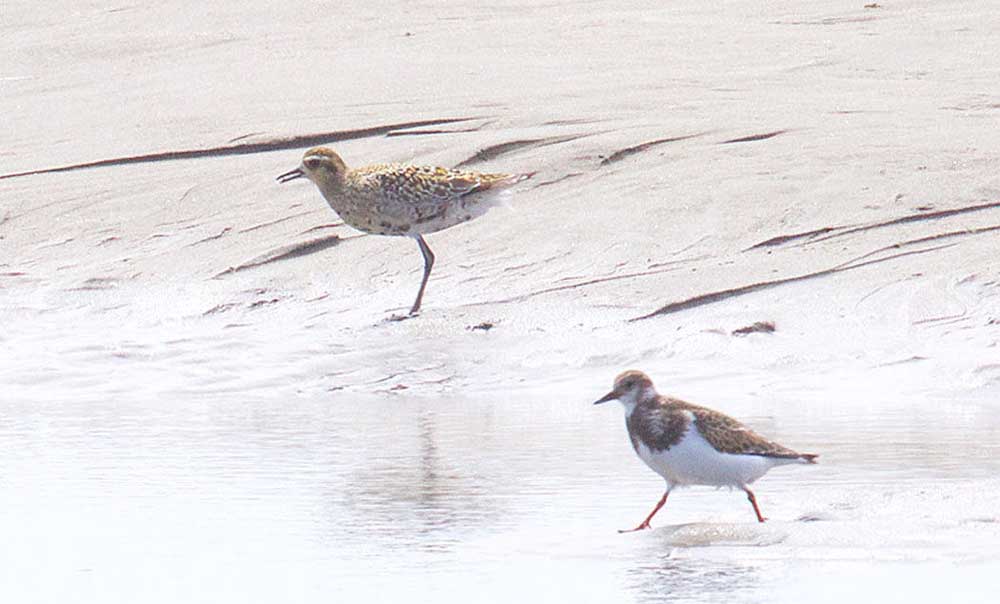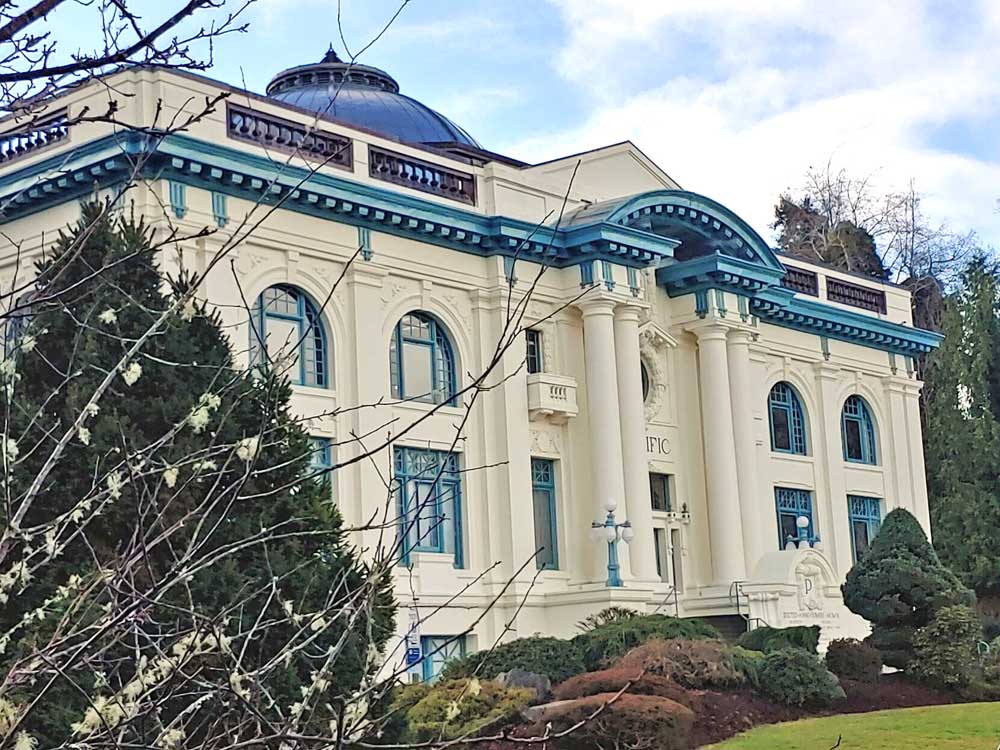Birdwatching Pacific golden plover: Another rarity in our midst
Published 11:25 am Tuesday, September 5, 2017

- The Pacific golden plover along with a ruddy turnstone (right) forages along the edge of one of the tidal pools, left behind by the ocean as it ebbs.
This area has been the recipient of numerous rare or very uncommon bird sightings this summer. The latest is the Pacific golden plover. The Cornell Ornithological Lab indicates that this “beautiful shorebird, the Pacific golden-plover breeds in western Alaska and Siberia and winters on islands across the Pacific Ocean, through southeast Asia, to northeastern Africa.”
Trending
Its breeding area is in the wet lowland vegetation of the Arctic tundra. In winter, habitat wise, it prefers salt marshes, golf courses, lawns, parks and forest clearings. Now as it migrates to its wintering areas it can best be seen on mudflats, beaches or on pasture land in our area.
Like other plovers it moves by the run, stop and run again method. As it runs, it scans for prey, and when it stops it does so to capture the prey. It snatches the prey with either a single peck or a series of pecks. Its favorite meal is one comprised of seeds, leaves, berries and/or invertebrates.
The Pacific golden plover is quite similar to the American golden plover in appearance, but on average sports more golden tones and larger spots above. It has longer legs, a longer bill and shorter wings. In addition, its ear spot is generally more noticeable. Both plovers are about the size of a robin.
Trending
The most common medium-sized plover in our area is the black-bellied plover. It is our largest plover at 11.5 inches in size. Its bill is stout and when in flight its armpits are black! There are quite a few black-bellied plover on our beaches at the moment, particularly at the north end.
My mantra these days is that of “Birdwatching.com” and that is, “Birdwatching is your lifetime ticket to the theatre of nature.” It is time to start birdwatching on the beach in earnest. You may see a rarity or two in the Long Beach Peninsula’s theatre of nature.









